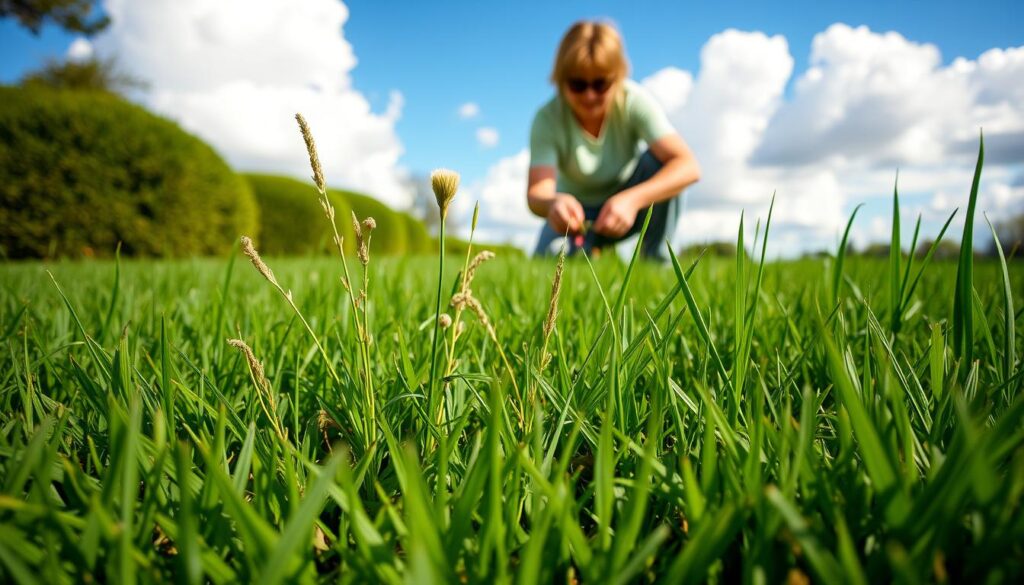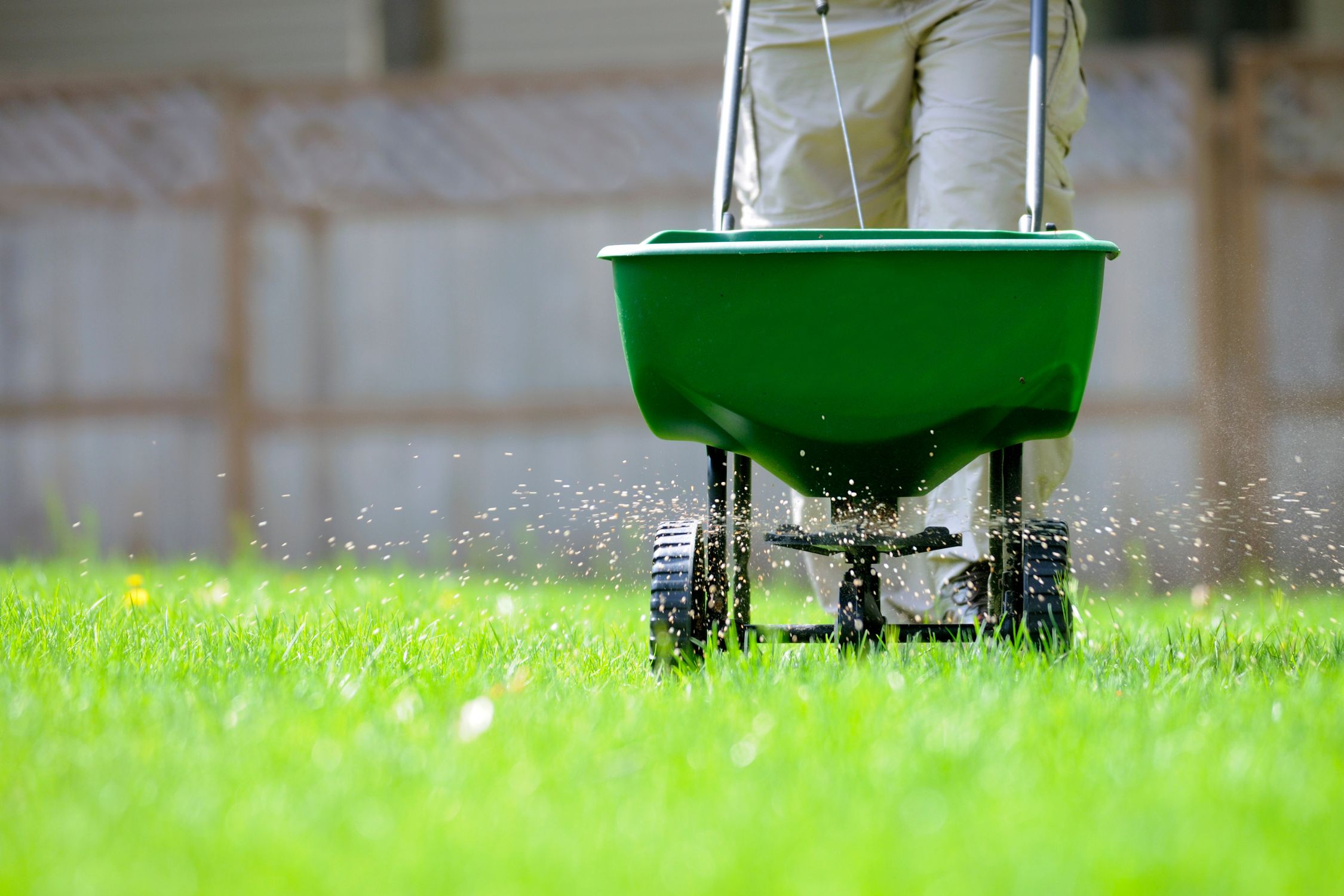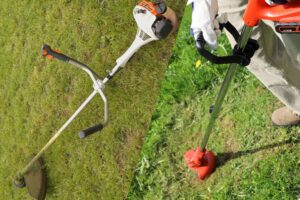Spring is the perfect time to make your yard look great again. As a homeowner, you know how important it is to keep your backyard in top shape. Spring lawn care is key to having a beautiful outdoor space.
With a few easy steps, like cleaning, mowing, fertilizing, and watering, you can make your yard lush and green. It’s all about taking care of your lawn and making it look its best.
Key Takeaways
- Early spring is the best time to start your lawn care routine for a lush yard.
- Essential activities include debris removal, dead grass raking, and preparing your lawn for growth.
- Proper lawn mower maintenance is crucial for effective backyard care.
- Choosing and applying the right fertilizer can greatly enhance lawn health.
- Regular watering techniques and mowing practices help maintain a vibrant yard.
Early Spring Cleaning
Early spring cleaning is key for a healthy lawn. After winter, it’s vital to clean your yard for new growth. This means doing a few important tasks to get your lawn looking great.
Remove Debris
Winter leaves behind twigs, leaves, and trash. The first step is to remove this debris. It stops mold and mildew from harming your grass. Use a leaf blower, rake, or your hands to clean up.
Rake Out Dead Grass
Then, get rid of dead grass. Thatch, a layer of organic material, builds up over winter. Raking it out improves air flow, fights disease, and makes room for new growth. It also loosens the soil for new seeds.
Prepare Your Lawn for Growth
Finally, make sure the soil is ready for new growth. Aerating the soil helps nutrients, water, and air reach the roots. You might also add compost or fertilizer for extra help.
By following these steps, you’ll be ready for a great yard this season.
Preparing Your Lawn Mower
A well-maintained lawn mower is key for a healthy yard. Before mowing season starts, do a detailed lawn mower maintenance check. This saves time and makes sure your mower works well. Here are the main steps to get your lawn mower ready.
Maintenance Check
First, check your lawn mower’s condition. Look at the wheels, handles, and bolts to make sure they’re tight. A good spring mower prep means checking all parts, finding worn-out ones, and fixing or replacing them.
Sharpen the Blades
Sharpening mower blades is very important. Sharp blades cut grass cleanly, helping it grow well and avoiding diseases. Sharpen or replace your blades at the start of the season for the best results. Always be careful with blades and follow the maker’s instructions.
Oil and Fuel Check
Lastly, do a mower oil check to keep your engine running smoothly. Drain old oil and put in new oil as the maker suggests. Also, check the fuel level and use fresh, clean fuel to avoid clogs and engine harm.
| Maintenance Task | Recommended Frequency |
|---|---|
| Overall inspection | Start of the season |
| Sharpening mower blades | Twice per season |
| Mower oil check | Every 50 hours of use |
| Fuel check | Before each use |
Fertilization Strategies
Lawn fertilization is key to growing a lush, green lawn. It’s important to pick and apply the right products. I’ll explain how to choose the best fertilizer and how to apply it effectively.
Choosing the Right Fertilizer
When picking fertilizer, think about your lawn type and local weather. Warm-season grasses need different nutrients than cool-season ones. Look for a balanced fertilizer with nitrogen, phosphorus, and potassium. Some fertilizers also have micronutrients that your soil might need.
Application Techniques
Good fertilizer application means using the right tools and methods. Start by measuring your lawn to figure out how much fertilizer you need. Use a broadcast or drop spreader, spreading it in overlapping patterns to cover all areas. Lightly water your lawn after to help the nutrients soak into the soil.
Here are some extra lawn care tips:
- Fertilize early in the morning or late in the afternoon to avoid the heat.
- Always follow the instructions on the fertilizer package for the best results.
- Consider a slow-release fertilizer to prevent burning your lawn and provide steady nutrients.
The Importance of Aeration
Lawn aeration is key to a healthy yard. It makes small holes in the soil. This lets oxygen, water, and nutrients reach the roots better.
Spring lawn aerating makes a big difference. It boosts drought resistance and nutrient uptake. It also tackles compaction, especially in busy areas.
Regular aeration also fights thatch buildup. This keeps the lawn lush and strong. It helps the lawn stay green and healthy all season.
Spring Lawn Care for Weed Control
Keeping your lawn weed-free is key to a lush, healthy look. Using both pre-emergent herbicides and post-emergent herbicides in your spring routine helps. This way, your yard stays weed-free all season.

Pre-emergent Herbicides
Pre-emergent herbicides are your first defense against weeds. They create a barrier in the soil, stopping weed seeds from growing. Apply pre-emergent herbicides early in spring, before weeds appear. This method works well against annual weeds like crabgrass and foxtail.
Post-emergent Herbicides
Once weeds show up, it’s time for post-emergent herbicides. These products target weeds without harming your grass. Use post-emergent herbicides when weeds are growing. Always follow the instructions to protect your lawn.
Seeding and Overseeding Tips
Spring is the best time for lawn seeding and overseeding lawns. This makes your yard lush and green. First, pick a grass seed that fits your climate. It’s important to choose the right type for your area.
Getting ready is crucial. Before spring seeding, aerate your soil. This helps seeds get into the ground better. Use high-quality seed that’s right for your area for the best results.
When planting, spread seeds evenly. Use a broadcast spreader for big areas to cover everything well. After planting, rake the soil lightly. This helps keep seeds safe from wind and birds.
- Water seeds every day until they grow. Keep the top soil moist.
- Stay off new seed areas to let it grow without trouble.
- Use starter fertilizer to give seeds the nutrients they need early on.
Here’s a look at grass seed types for different climates:
| Grass Type | Ideal Climate | Benefits |
|---|---|---|
| Kentucky Bluegrass | Cool-Season | Lush texture and vibrant color |
| Bermuda Grass | Warm-Season | Drought-resistant and fast-growing |
| Fescue | Transitional | Shade-tolerant and disease-resistant |
By following these grass growing tips, you’ll have a great lawn. Seeding and overseeding lawns regularly fills in thin spots. It makes your grass thicker and your yard greener all spring long.
Watering Techniques for Spring
Getting a lush, green lawn in spring starts with good watering. Using the right spring watering techniques is key. It helps your grass drink well without wasting water.
Water your lawn early in the morning. This lets the soil soak up water before the sun gets too strong. It helps your grass grow deeper roots. Don’t water in the evening, as it can cause mold and mildew.
Change how often you water based on rain and temperature. If it rains a lot, water less. But, water more when it’s hot and dry. These tips help keep your lawn healthy all season.
Thorough and consistent watering is the foundation of a thriving lawn.
Using a soaker hose or drip system is very efficient. They water the roots directly. This cuts down on runoff and makes sure water spreads evenly. It’s a top spring watering technique for saving water and keeping your lawn healthy.
| Watering Time | Benefits |
|---|---|
| Early Morning | Maximizes absorption, reduces evaporation |
| Midday | Not recommended due to high evaporation |
| Evening | Avoid to prevent mold and fungus |
By following these watering tips, your lawn will stay green and healthy all spring.
Mowing Best Practices
Mowing your lawn can turn it into a lush, green paradise. Learning how to adjust blade height and mowing frequency is key. These steps help keep your lawn healthy and looking great.
Proper Blade Height
Getting the blade height right is crucial for mowing your lawn well. Each type of grass needs a specific height to grow well. Adjusting the blade height regularly prevents damage and encourages strong roots. Here’s a table showing the best blade heights for common grass types:
| Grass Type | Recommended Blade Height |
|---|---|
| Kentucky Bluegrass | 2.5 to 3.5 inches |
| Fescue | 3 to 4 inches |
| Bermudagrass | 1 to 2 inches |
| St. Augustine | 2.5 to 4 inches |
Frequency of Mowing
The frequency of mowing affects your lawn’s health and look. Mowing too often can stress your grass. But mowing too little can lead to overgrowth, which is bad. Here are some tips to find the right mowing frequency:
- Mow cool-season grasses like Kentucky Bluegrass every 5-7 days in spring and fall.
- Mow warm-season grasses like Bermudagrass every 7-10 days in summer.
- Change mowing frequency with the seasons and growth rates to keep your lawn healthy and vibrant.
Following these mowing tips and keeping the blade height right ensures your lawn looks beautiful and stays healthy all year. The right lawn mowing approach can greatly improve your yard’s appearance.
Conclusion
As we finish this spring lawn care guide, it’s clear that maintaining a healthy lawn is a mix of early prep, regular care, and knowing your yard’s needs. From clearing debris and raking out dead grass to the finer points of fertilizing and mowing, each step is key to a lively lawn.
Using these seasonal lawn tips will make your yard lush and green, boosting your home’s look. Keeping up with lawn mower upkeep, weed control, and the right watering is essential. It sets your yard up for success all season.
Lastly, I urge you to dive into these DIY lawn maintenance tasks with excitement. Turning your lawn into a green oasis is rewarding, not just about the work. Here’s to a beautiful, well-kept lawn that brings joy all spring and beyond!






